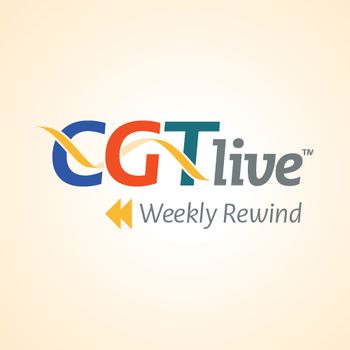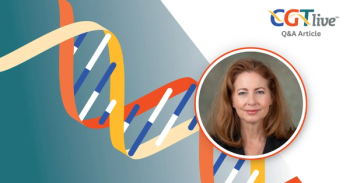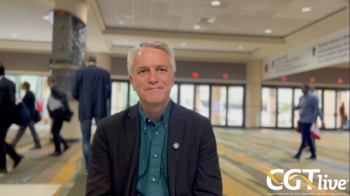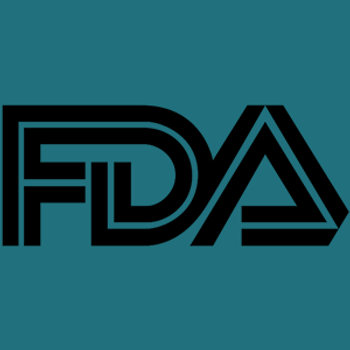
The Next Steps for Personalized Gene Editing
Rebecca Ahrens-Nicklas, MD, PhD, and Kiran Musunuru, MD, PhD, physician-scientists at CHOP, discussed what lies on the horizon after KJ’s treatment with a CRISPR-based gene editing therapy for CPS1 deficiency.
This is the second part of an interview with Kiran Musunuru, MD, PhD and Rebecca Ahrens-Nicklas, MD, PhD. For the first part,
The Children’s Hospital of Philadelphia (CHOP) recently made history when it treated a child named KJ with a personalized CRISPR-based gene editing therapy for his severe carbamoyl phosphate synthetase 1 (CPS1) deficiency. KJ's case, an n-of-1 clinical trial, was covered in a paper in The New England Journal of Medicine (NEJM) and a presentation at
At the ASGCT meeting, CGTLive® interviewed Rebecca Ahrens-Nicklas, MD, PhD, a physician-scientist and director of the Gene Therapy for Inherited Metabolic Disorders Frontier Program at CHOP, and Kiran Musunuru, MD, PhD, a physician-scientist and Barry J. Gertz Professor for translational research in the Perelman School of Medicine at the University of Pennsylvania and CHOP, 2 of the authors on the NEJM paper, about the trial and its implications. Ahrens-Nicklas and Musunuru discussed the next steps for the gene editing technology and how it could be potentially applied to a wider range of patients with rare diseases in the future.
CGTLive: Looking ahead, what are the next steps for the gene editing technology used in this study?
Rebecca Ahrens-Nicklas, MD, PhD: Obviously, from a clinical perspective, we will continue to follow KJ very closely and make sure he gets excellent clinical care. My colleagues at CHOP have done an amazing job, all of us working together, to manage his clinical needs.
In terms of where we move from here in developing and applying this type of technology for a broader population of rare disease patients, there's so much work to be done and I think we're thinking a lot about the best way to move forward in order to make this type of opportunity available to more individuals. But it's going to be very important that we move beyond just n-of-1 clinical descriptions, but rather come up with a platform approach where, essentially, you can have a population of individuals that have ultra-rare diseases that are related, and maybe they require a slightly different gene editing drug, but you can compare across individuals to start trying to understand more robustly things like efficacy.
Kiran Musunuru, MD, PhD, MPH, ML, MRA: I think the long term goal, if I may add to that, is we want this to be a platform that will benefit many patients. We can do n-of-1 studies—we could do them from here to Kingdom Come—but Rebecca and I are only 2 people and so there's only so much we can do over the lengths of our careers, if we're forecasting over years. We really need something much more scalable that can be applied to help dozens, hundreds, thousands, and eventually, all the people who have rare diseases, who collectively—even though each disease is individually rare—collectively, it's millions of people who have rare diseases.
So the key thing, again, is if we're using a very, very similar drug, whether it's for the purpose of reducing cholesterol levels in a heart disease patient, or whether it's for treating a child with a very, very devastating, ultra-rare genetic condition—if the basic drug is the same, then I think eventually we'll get to the point where enough patients have received a version of this drug that regulatory agencies like the FDA will say "Okay, we understand this drug. We understand its safety profile. There's really no need to go through the whole process of drug development over and over again for each individual patient." It becomes a platform, it becomes a process. Academic medical centers, perhaps initially, will become credentialed centers of excellence to actually carry out that process, and then the regulators won't necessarily need to get involved. It'll happen locally and a patient who gets admitted to a hospital ends up referred to one of these centers of excellence, they undergo genetic testing, figure out exactly what variant is causing their disease, and then, ideally, within a matter of weeks, go through the process of actually designing and then manufacturing the drug and then giving it to the patient without delay. That would be the dream. That's where we eventually want to get to.
Are there any additional challenges with this approach that still need to be addressed that you can discuss?
Rebecca Ahrens-Nicklas, MD, PhD: I think one thing from a clinical perspective that would be very helpful is to be able to come up with new ways of noninvasively measuring the amount of editing that's happening in the liver, or whatever your target organ might be down the road. In the case of a sick infant, it's really not ethical to do a liver biopsy just to measure editing efficiency, and so we are thinking hard about ways we can come up with surrogate markers of editing efficiency that don't require a liver biopsy. But I think there's a lot of room for growth as we move forward and more personalized gene editing therapies are being deployed to figure out how we actually quantify the amount of editing that's happening in response to the drug.
Kiran Musunuru, MD, PhD, MPH, ML, MRA: I would add that the editing technologies we're using are very new. They didn't really come into existence until 2013, so it's early days, and it's just going to get better and better. I think one of our goals is to see these technologies improve in efficiency, right? We can get them into the liver, we've shown that we can do that, and we can get some amount of editing in the liver, but the more editing we can get, the more we can take variants and revert them to the normal versions—to the wild-type versions—the better the therapeutic effect is likely going to be. As such, we're going to have to refine and iterate and improve those tools—and that will happen. It's not just the 2 of us. It's a whole community, a whole group—a field, really—of scientists and engineers who are working on this problem. As that gets better and better, it'll become easier and easier to deploy these therapies, and we will see improvements in clinical efficacy over the course of time for sure.
This transcript has been edited for clarity.
REFERENCES
1. World's first patient treated with personalized CRISPR gene editing therapy at Children’s Hospital of Philadelphia. News release. Children’s Hospital of Philadelphia. May 15, 2025. Accessed May 15, 2025.https://www.chop.edu/news/worlds-first-patient-treated-personalized-crispr-gene-editing-therapy-childrens-hospital
2. Musunuru K, Grandinette SA, Wang X, et al. Patient-specific in vivo gene editing to treat a rare genetic disease. The New England Journal of Medicine. May 15, 2025. Doi: 10.1056/NEJMoa2504747, LA.
Newsletter
Stay at the forefront of cutting-edge science with CGT—your direct line to expert insights, breakthrough data, and real-time coverage of the latest advancements in cell and gene therapy.

















































